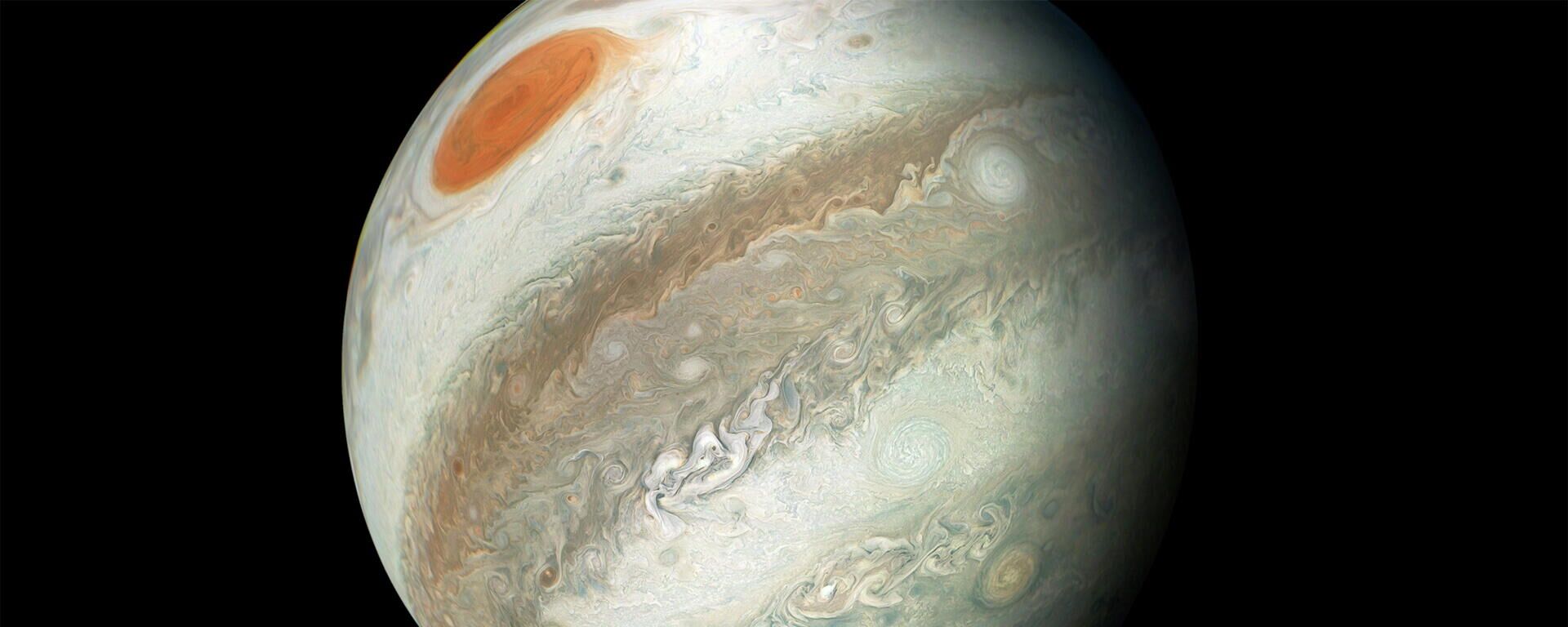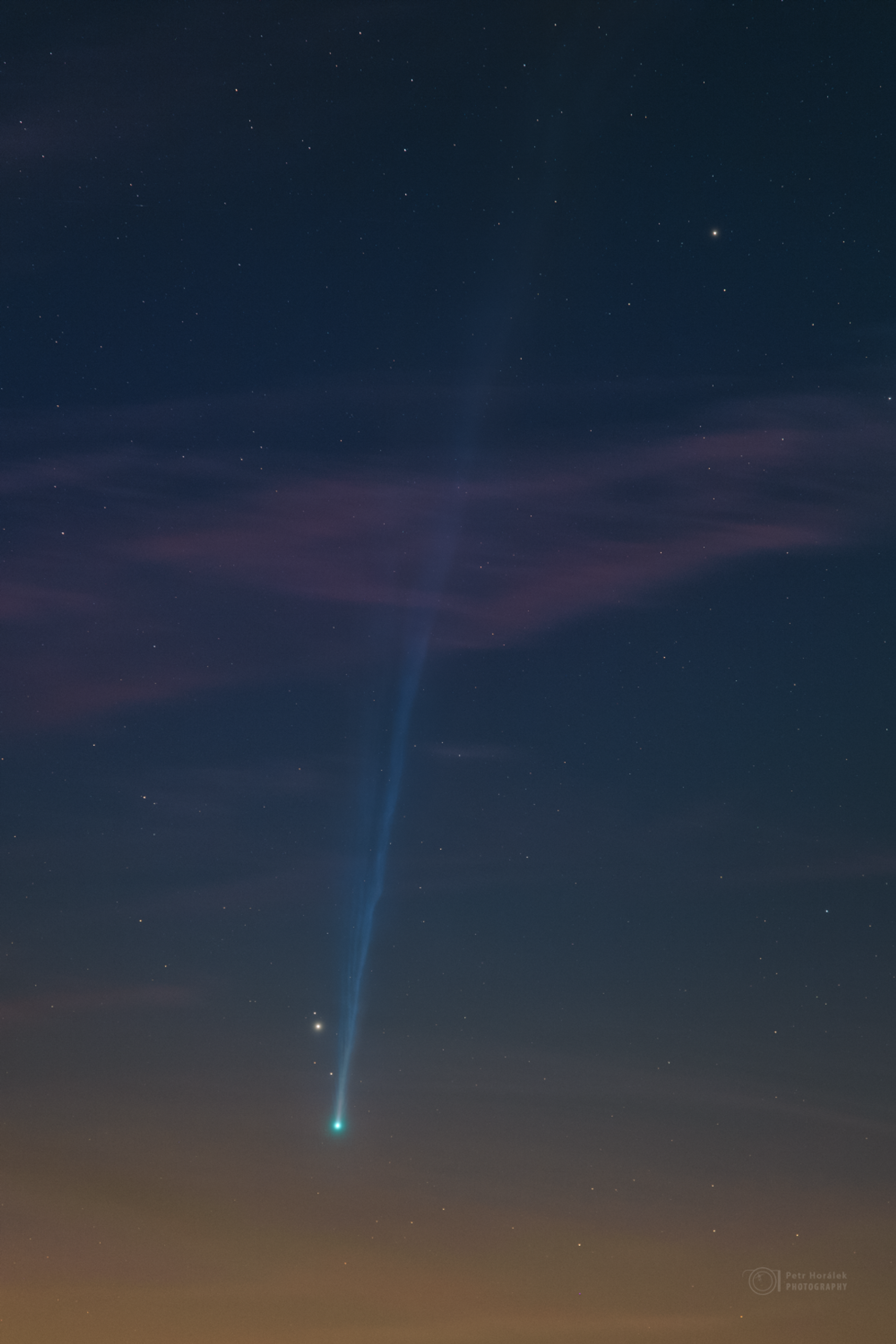https://sputnikglobe.com/20230912/photo-once-in-430-year-green-comet-nishimura-approaches-earth-1113324769.html
Photo: Once-in-430-Year Green Comet Nishimura Approaches Earth
Photo: Once-in-430-Year Green Comet Nishimura Approaches Earth
Sputnik International
In a celestial spectacle that has captivated stargazers worldwide, the recently discovered green comet Nishimura is set to make its closest approach to Earth today, September 12.
2023-09-12T22:54+0000
2023-09-12T22:54+0000
2023-09-12T22:52+0000
beyond politics
science & tech
earth
space
comet
comet
astronomy
asteroid
asteroid
https://cdn1.img.sputnikglobe.com/img/07e5/02/10/1082091571_0:107:2048:1259_1920x0_80_0_0_4e7e84746e7543a1dcadf8a885125929.jpg
In a celestial spectacle that has captivated stargazers worldwide, the recently discovered green comet Nishimura is set to make its closest approach to Earth today, September 12.However, spotting the comet might prove challenging, as it is extremely faint, necessitating the use of binoculars and a precise knowledge of its location.Scientists initially speculated that Nishimura might be an interstellar comet, much like 'Oumuamua and Comet 2I/Borisov. However, further observations revealed it follows an approximately 430-year orbit around the sun, dispelling the notion of it being a one-time visitor from interstellar space.The comet on September 12 will reach its closest point to Earth, coming within a distance of 78 million miles (125 million kilometers). By September 17, Nishimura will make its perihelion, or closest approach to the sun, drawing within 20.5 million miles (33 million kilometers) of our star.Thereafter, it will embark on its journey back to the outer solar system, provided it survives its close encounter with the sun.Comet Nishimura's radiant appearance has been a sight to behold as it brightened significantly during its approach. The dazzling transformation results from the release of gas from the comet's interior, a reaction to the intense solar wind and radiation it faces.The comet's coma, a cloud of gas and dust enveloping its solid core, emits a mesmerizing green glow due to the presence of dicarbon molecules reacting with sunlight, as explained by science-related media.In recent days, astrophotographers around the world have captured stunning images of Comet Nishimura illuminating the night sky. However, as the comet gets closer to the sun, it will become increasingly difficult to spot, ultimately vanishing from view as the sun's brilliance outshines it.Notably, the comet endured encounters with two coronal mass ejections (CMEs) from the sun, causing temporary disruptions to its impressive tail. While these solar storms didn't alter the comet's trajectory, they added an unexpected twist to its cosmic journey.
https://sputnikglobe.com/20230901/watch-amateur-astronomer-films-object-striking-jupiter-1113062922.html
earth
Sputnik International
feedback@sputniknews.com
+74956456601
MIA „Rossiya Segodnya“
2023
News
en_EN
Sputnik International
feedback@sputniknews.com
+74956456601
MIA „Rossiya Segodnya“
Sputnik International
feedback@sputniknews.com
+74956456601
MIA „Rossiya Segodnya“
comet nishimura, comet c2023 p1, beautiful comets, what comets are visible from earth, coronal mass ejections, cme, what is comet nishimura, why is comet nishimura green, sigmahydrids meteor shower, spotting comets, who is nishimura, japanese astronomer spots comet
comet nishimura, comet c2023 p1, beautiful comets, what comets are visible from earth, coronal mass ejections, cme, what is comet nishimura, why is comet nishimura green, sigmahydrids meteor shower, spotting comets, who is nishimura, japanese astronomer spots comet
Photo: Once-in-430-Year Green Comet Nishimura Approaches Earth
The 1/2-mile-sized (1-kilometer) comet was discovered on August 12 by an amateur astronomer, and is believed to originate from the Oort Cloud - a reservoir of comets and icy objects beyond Neptune's orbit. However, some experts speculate it could be linked to the Sigma-Hydrids meteor shower, which typically peaks in early December each year.
In a celestial spectacle that has captivated stargazers worldwide, the recently discovered green comet Nishimura is set to make its closest approach to Earth today, September 12.
However, spotting the comet might prove challenging, as it is extremely faint, necessitating the use of binoculars and a precise knowledge of its location.
"So you really need a good pair of binoculars to pick it out and you also need to know where to look," said Paul Chodas, the manager of NASA's Center for Near-Earth Object Studies, emphasizing the need for equipment and guidance.
Scientists initially speculated that Nishimura might be an interstellar comet, much like 'Oumuamua and Comet 2I/Borisov. However, further observations revealed it follows an approximately 430-year orbit around the sun, dispelling the notion of it being a one-time visitor from interstellar space.
The comet on September 12 will reach its closest point to Earth, coming within a distance of 78 million miles (125 million kilometers). By September 17, Nishimura will make its perihelion, or closest approach to the sun, drawing within 20.5 million miles (33 million kilometers) of our star.
Thereafter, it will embark on its journey back to the outer solar system, provided it survives its close encounter with the sun.
The discovery of the rare green comet was made in mid-August by amateur Japanese astronomer Hideo Nishimura, and incidentally marked the third such discovery in his career.
Such discoveries by amateur astronomers are increasingly uncommon due to the extensive professional sky surveys conducted by powerful ground telescopes.
Comet Nishimura's radiant appearance has been a sight to behold as it brightened significantly during its approach. The dazzling transformation results from the release of gas from the comet's interior, a reaction to the intense solar wind and radiation it faces.

1 September 2023, 20:20 GMT
The comet's coma, a cloud of gas and dust enveloping its solid core, emits a mesmerizing green glow due to the presence of dicarbon molecules reacting with sunlight, as explained by science-related media.
In recent days, astrophotographers around the world have captured stunning images of Comet Nishimura illuminating the night sky. However, as the comet gets closer to the sun, it will become increasingly difficult to spot, ultimately vanishing from view as the sun's brilliance outshines it.
Notably, the comet endured encounters with two
coronal mass ejections (CMEs) from the sun, causing temporary disruptions to its impressive tail. While these solar storms didn't alter the comet's trajectory, they added an unexpected twist to its cosmic journey.




